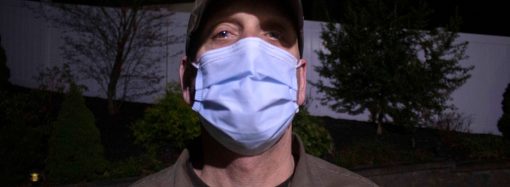By Nick Kalantzopoulos
When I was accepted for my internship at Fios1 News and subsequently decided to take it, I was excited because it was my first real experience in television. I had already completed two off-campus internships, at Long Island Business News, a print newspaper, and WSHU, a public radio station. I had already learned about just how different the radio voice was to the newspaper voice was, in terms of the writing. I knew that television writing would have its own voice, and heading into the internship at Fios1 News, I was excited to find that voice.
On my first day, there were 13 other interns, eager to begin. Little did I know that I wouldn’t see the majority of them again.
I’m referring to the first big thing I wish I had known heading into the internship, and that is just how separate each segment of television news is. About five of the interns were operations interns, another five worked directly with the newsgathering staff, and I, along with two other interns, worked with the videographers. Seldom do these different segments of television news work with one another, and in 2017, most of the communication between these divisions happens by email.
Unfortunately, we interns were not allowed to go out into the field because of insurance liabilities. An internship that revolves around shooting video of the news while being unable to leave the studio was difficult, to say the least, but we made it work.
Easily the best part of my experience at Fios1 News was Aaron Cipollina, my internship coordinator. Aaron, the chief videographer at Fios1, managed to simultaneously do his job and take care of three interns. He was the only internship coordinator to call his interns before the summer started to set up a daily schedule. We learned more about the equipment we use, worked on shooting and editing, and shot some practice news packages in the building. We pitched our story ideas, usually involving the building we were in, or one of the businesses inside the building, and Aaron and the other interns acted as characters in the story.
Aaron also allowed us to stray from his side. Two of us videography interns expressed an interest in doing more on-camera work, so Aaron set up work shifts during which we could shadow anchors. I went in from 2:30-10 in the morning on multiple occasions to work with the morning anchor, CJ Papa. CJ was great and more than willing to allow us to ask questions and even practice reading the TelePrompTer on camera. As someone who is also interested in sports broadcasting, I also got to work with the sports director several times. I asked him many questions and learned how to better write highlight packages. This type of writing was foreign to me and was exactly the type of news writing I was expecting to find in this internship.
When it comes to advice for future interns at Fios1 News, I have to stress just how much dead time there is for many working in the building. As interns, we often had to wait for the workers to finish before they could work with us or give us assignments. That, and the fact that we couldn’t work in other departments as much as we would have liked, were two of the problems I had with the internship.
In the end, there’s one thing I learned that made me feel very confident in myself going forward. All day while I was working, there would be multiple screens in front of me, showing the news shows playing at the time. I would watch the packages playing at the time, and often I would think, “wow, that’s some shaky video,” or “the framing could have been better,” and, of course, “Professor Ricioppo would not have liked video.” All jokes aside, there was a very important thing that I realized, and that was, if I can see mistakes reporters and videographers are making, and I feel I could do better, than I am ready to do this professionally. And in the end, that feeling made the whole internship worthwhile.
